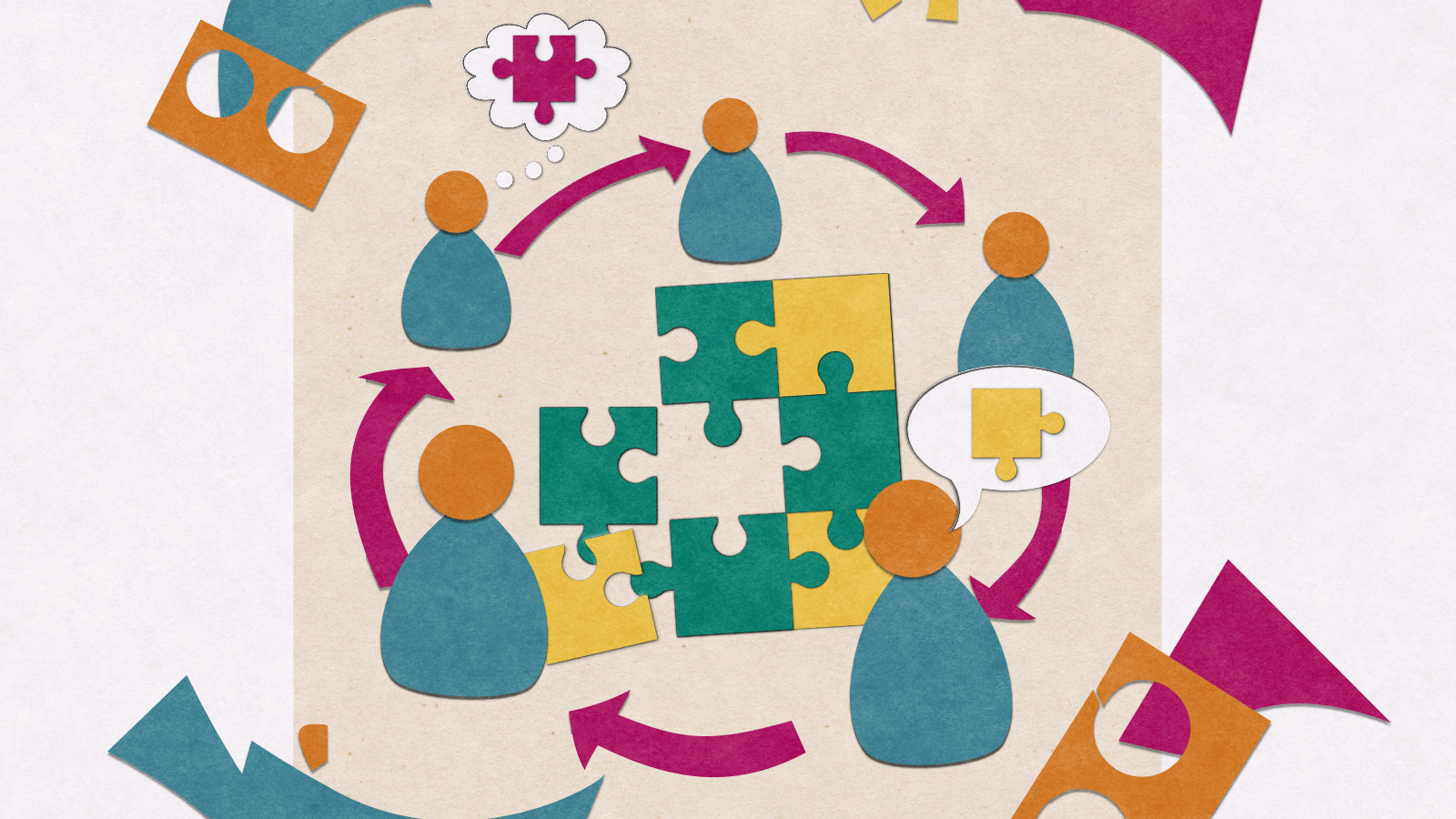How we work: introducing sociocracy

There is no reason to believe that bureaucrats and politicians, no matter how well-meaning, are better at solving problems than the people on the spot, who have the strongest incentive to get the solution right. -Elinor Ostrom, Nobel Prize in Economics, 2009
Full disclosure: I wasn’t aware of sociocracy four months ago. As a former politics and philosophy student I found this odd: why hadn’t I encountered this word in any of the classes I had taken? Why did I not even remember a passing mention of it from the piles of dry books and academic papers I sifted through at university?
Then I joined Equal Care last November and saw sociocracy used in discussions to great effect, and the puzzle over why I had not encountered it until now amazed me even more.
I wanted to learn more about sociocracy and how it works, so a few weeks ago I joined the latest cohort of Equal Care members to start a course covering its basics. The sessions are led by Ted Rau from Sociocracy for All: a non-profit organisation founded in 2016 to make sociocracy accessible to everyone.
Summed up (and based on my understanding so far), sociocracy allows groups with a shared aim or focus to self-organise, share ideas and information, and make decisions efficiently in a way that allows everyone to contribute. It utilises methods such as speaking in rounds and encourages the use of consent in decision-making - reaching a point where there are no objections and a decision is good enough for now or safe enough to try. This contrasts with the usual method of consensus, where a majority vote on something could overrule valid objections to it.
It also flattens out the hierarchical structure often found in organisations. Those involved in a discussion are those directly connected to what is being discussed, and everyone is treated equally. Individuals are encouraged and given opportunities to contribute ideas that can effect real change. This is a refreshing change for those who may occasionally struggle to speak up in meetings or feel that their managers sometimes ignore their suggestions and arrive at their own decision.
Perhaps like me, you have previous experiences with two-hour meetings where it feels like nothing is being properly discussed or resolved. You may also have memories of sinking into your chair, barely getting a word in edgeways while others dominate the discussion. For me, learning that there's a different way that incorporates collaboration and active participation into its very structure, is exciting and eye-opening.
While some things in sociocracy take a bit of getting used to (for example, talking in rounds: I'll admit that I find it particularly hard not to automatically respond to someone's suggestion and head off on a tangent) after two sessions it is already clear to me how powerful a tool this can be for groups of people who need to make significant, potentially life-changing decisions about someone's care.
“I’m attracted to sociocracy because it distributes power from people at the top to the people on the ground - and they’re the ones who know what the problems are.” - Matt Williams, Lead Software Engineer at Equal Care
To many, it would seem obvious that those giving care and support would be the best placed to make decisions about their work. An individual with appropriate, up-to-date knowledge, training, and experience should feel empowered to solve problems that arise and effectively communicate with those they work with and those they support. However, this is far from the norm for care and support workers. Why is this?
Communication breakdown
Traditional care provider hierarchies require workers to say “yes” to everything thrown at them. In an earlier blog post discussing the ‘Deliveroo model’ of providing care, we identified that it is increasingly normal for a person to be reduced to a list of care needs which are then parcelled off for delivery by whoever is available on a provider’s rota. Workers have little to no power over their schedule or what they are instructed to do, and those receiving care can find themselves subject to a revolving door of individuals they haven’t been introduced to.
The lack of repeat interactions sabotages the potential for any meaningful relationship to grow, which for workers means a lack of knowledge and experience particular to the person they are providing with support. It’s more likely that important, potentially crucial information relating to a person’s care needs will be missed. If issues do get picked up, they’re often fed back up through a management chain for the consideration of someone far removed from the care relationship itself.
Where there are several individuals involved in someone’s care, the situation can become almost absurd, with no communication flowing between those giving care and support. On top of that, raising concerns or questioning decisions made by managers not directly involved with a person’s care might feel hard to do if your employment feels insecure; for example, if you are on a zero-hour contract. All of this can have a detrimental, potentially fatal effect when someone’s welfare is at stake.
A better way
At Equal Care, teams are encouraged to work differently. As a cooperative organisation that uses sociocratic methods, we promote and encourage open, honest communication between those who have a shared area of responsibility: whether it’s giving care and support to someone, recruiting new members to a team, or implementing changes to our platform.
This way, those that have the greatest amount of day-to-day knowledge about something can offer suggestions and raise concerns in a safe way that can bring about actual change. Decisions can be made efficiently, with less of a need to refer suggestions for action through layers of management. This can have a monumental impact on not only how a worker feels about their role, but the quality of the work being delivered: in our case, the giving of care and support.
As someone who has had four months of seeing sociocracy in action, and two weeks of learning about its basic principles, I am excited to speak to anyone who will listen about its potential to transform the world around us and how we interact with one another.
Sociocracy for All's website is a terrific place to learn more about sociocracy. It's packed full of detailed but accessible resources (like the above video) and examples of the use of sociocracy in different situations.

